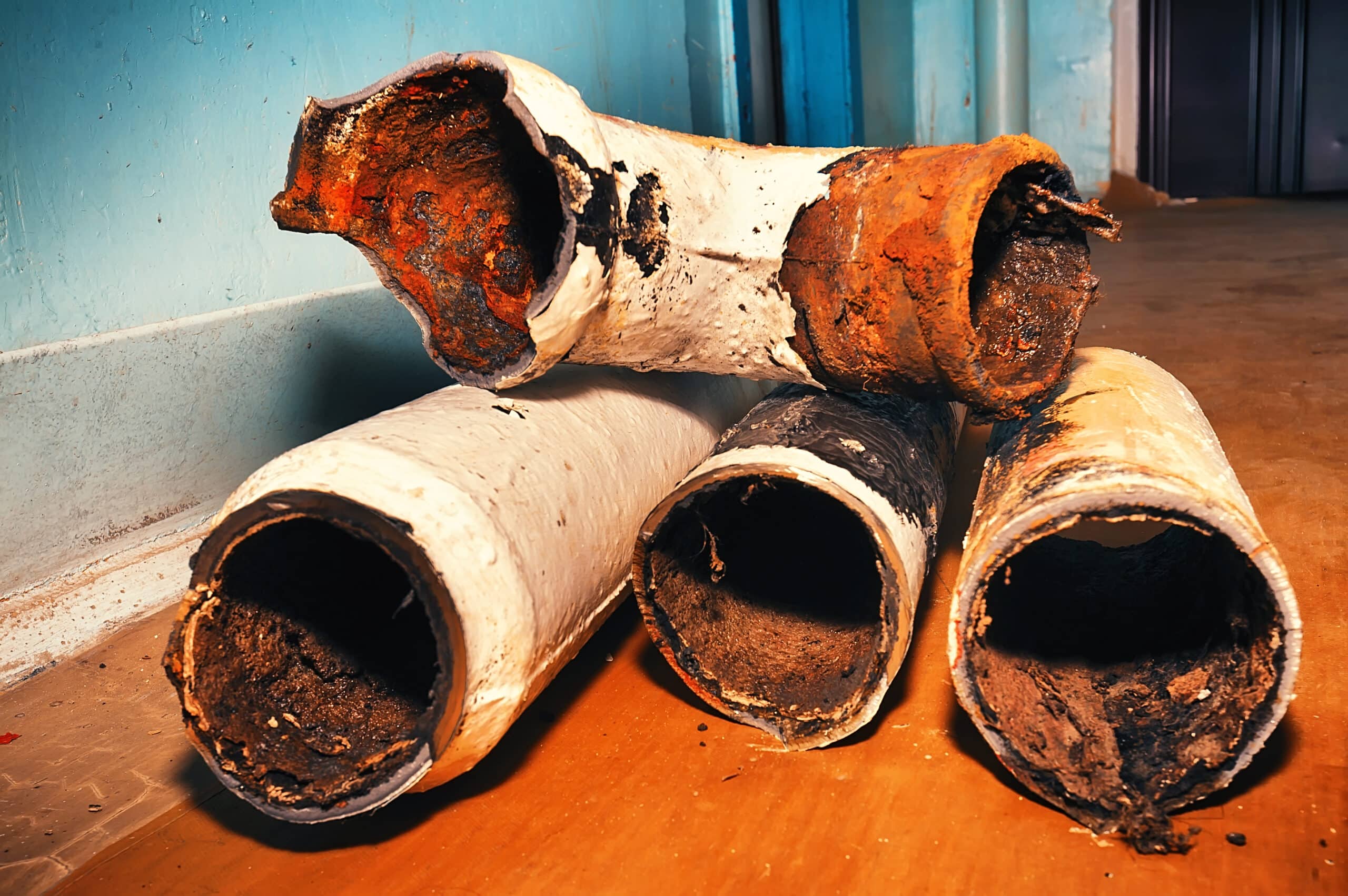
October 17, 2023
In the landscape of plumbing and sewage systems, Orangeburg pipe has emerged as a notable topic of discussion among homeowners, plumbing professionals, and infrastructure experts. This unique pipe material, once widely used, now represents a challenge due to its age and composition. In this comprehensive article, we’ll delve into the specifics of Orangeburg pipe, its history, potential issues, and modern solutions for those dealing with this aging pipe system.
What is Orangeburg Pipe?
Orangeburg pipe, also known as “bituminous fiber pipe,” is a type of sewer pipe made from layers of wood pulp and pitch. It was first introduced in the 1940s and gained popularity for its lightweight nature and ease of installation. These pipes were predominantly used for sewer lines and some other drainage purposes until the 1970s.
Distinguishing Features of Orangeburg Pipes
When identifying Orangeburg pipes, several key characteristics stand out:
- Appearance: These pipes have a unique look, often described as similar to thick, black cardboard.
- Material Composition: Made from layers of wood pulp and pitch pressed together, they were once considered an economical option.
- Durability Concerns: Despite their initial appeal, Orangeburg pipes are now known for being prone to quick deterioration.
- Lifespan Limitations: Unlike more contemporary piping options, these pipes have a notably short lifespan and are vulnerable to environmental factors.
Understanding these features can help in making informed decisions about pipe maintenance and replacement.
Historical Context and Usage
During its prime, Orangeburg pipe was an economical alternative to the more expensive and heavier cast iron or clay pipes. Its production increased notably during World War II when traditional materials were scarce, making it a go-to choice for residential and sewer applications. However, as more durable materials became available, the use of Orangeburg pipe gradually declined.
Common Materials in Residential Plumbing Systems (Late 1940s to Early 1970s)
During the late 1940s to early 1970s, several materials were commonly used in residential plumbing systems due to their availability, cost, and ease of installation. Here’s an overview of the most widely utilized options:
Orangeburg Pipe
One of the notable materials from this period is the Orangeburg pipe, made from a combination of wood fibers and a bitumen-based compound. This pipe was popular due to its lightweight nature and straightforward installation process.
Copper Pipes
Copper pipes were extensively used because of their durability and resistance to corrosion. These pipes are still in use today and are particularly favored for their longevity and reliability in delivering potable water.
Galvanized Steel Pipes
Galvanized steel pipes, coated with a layer of zinc to prevent rusting, were also prevalent. However, these pipes had a tendency to corrode over time, which could lead to plumbing issues.
Cast Iron Pipes
For waste and drainage systems, cast iron pipes were a common choice. Known for their strength and noise-dampening properties, these pipes are particularly effective in minimizing the sound of water flow.
PVC (Polyvinyl Chloride) Pipes
Towards the latter part of this timeframe, PVC pipes started to gain popularity. These plastic pipes are known for their lightweight properties, resistance to corrosion, and ease of installation.
From wood fiber-bitumen mixtures in Orangeburg pipes to the sturdy and durable copper pipes, the materials used in residential plumbing systems from the late 1940s to early 1970s varied widely, reflecting a blend of innovation and practical needs.
Problems with Orangeburg Pipe
Despite its initial benefits, Orangeburg pipe is prone to several problems, mainly due to its construction material. The most significant issues include:
- Susceptibility to Deformation: Over time, these pipes tend to deform under pressure, often leading to a “collapsed pipe” scenario.
- Short Lifespan: The expected lifespan of Orangeburg pipes is around 50 years, considerably less than other materials like PVC or cast iron.
- Root Intrusion: Due to their relatively soft composition, they are more susceptible to intrusion from tree roots.
- Water Infiltration: The porous nature of the material can allow water infiltration, leading to further deterioration.
Identifying Orangeburg Pipe in Your Home
It can be challenging to identify Orangeburg pipe systems as they are underground. However, if your home was built between the 1940s and 1970s, it’s advisable to have a professional inspection. Plumbers can use cameras to inspect sewer lines and identify pipe materials.
Modern Solutions for Orangeburg Pipe Replacement
Replacing Orangeburg pipes is essential to prevent collapses and other severe plumbing issues. Modern alternatives include PVC (Polyvinyl Chloride) and ABS (Acrylonitrile Butadiene Styrene) pipes, which are more durable and have longer lifespans.
The Process of Replacement
The replacement process usually involves identifying the compromised Orangeburg pipe sections and then excavating to replace them with more robust materials. Trenchless sewer repair methods, such as pipe lining or pipe bursting, are also viable options. These methods are less invasive and can be more cost-effective in the long run.
Cost Considerations
The cost of replacing Orangeburg pipes can vary depending on the extent of the replacement, the chosen materials, and the method used. While this can be a significant investment, it’s crucial for the long-term integrity of your plumbing system.
Preventive Measures and Maintenance
If you have Orangeburg pipes and are not yet ready for a full replacement, regular maintenance and inspections are vital. This includes watching out for signs of plumbing issues, such as slow drainage, backups, or unexplained wet areas in your yard.
Overview and Recap
Orangeburg pipe, a once-popular sewer pipe material, poses unique challenges due to its susceptibility to damage and short lifespan. Identifying and replacing these pipes with modern materials is crucial for maintaining a functional and reliable plumbing system. Homeowners should consult with plumbing professionals to assess their situation and explore the best solutions for their specific needs.
As infrastructure continues to age, the topic of Orangeburg pipe replacement remains critical for ensuring the safety and efficiency of residential and municipal sewer systems. Through awareness and proactive measures, homeowners and communities can effectively address this issue, safeguarding their properties and the environment from potential plumbing failures.

Contact Shaw Trenchless Today
Contact Shaw Trenchless
At Shaw Trenchless, we endeavor to offer the highest quality of services and customer satisfaction to the people of Spokane, WA, and its surrounding areas. Contact our team today to schedule an appointment.


get a quote
